Maithilee Kunda
A Cognitively-Inspired Neural Architecture for Visual Abstract Reasoning Using Contrastive Perceptual and Conceptual Processing
Sep 21, 2023



Abstract:We introduce a new neural architecture for solving visual abstract reasoning tasks inspired by human cognition, specifically by observations that human abstract reasoning often interleaves perceptual and conceptual processing as part of a flexible, iterative, and dynamic cognitive process. Inspired by this principle, our architecture models visual abstract reasoning as an iterative, self-contrasting learning process that pursues consistency between perceptual and conceptual processing of visual stimuli. We explain how this new Contrastive Perceptual-Conceptual Network (CPCNet) works using matrix reasoning problems in the style of the well-known Raven's Progressive Matrices intelligence test. Experiments on the machine learning dataset RAVEN show that CPCNet achieves higher accuracy than all previously published models while also using the weakest inductive bias. We also point out a substantial and previously unremarked class imbalance in the original RAVEN dataset, and we propose a new variant of RAVEN -- AB-RAVEN -- that is more balanced in terms of abstract concepts.
A Computational Account Of Self-Supervised Visual Learning From Egocentric Object Play
May 30, 2023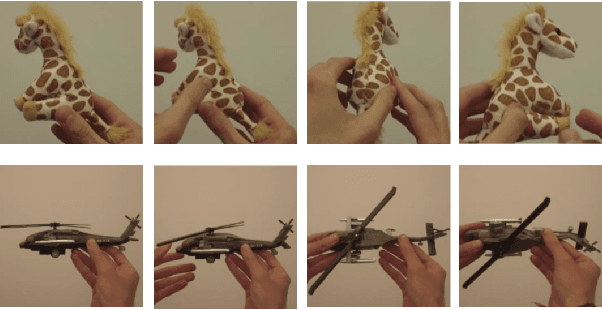



Abstract:Research in child development has shown that embodied experience handling physical objects contributes to many cognitive abilities, including visual learning. One characteristic of such experience is that the learner sees the same object from several different viewpoints. In this paper, we study how learning signals that equate different viewpoints -- e.g., assigning similar representations to different views of a single object -- can support robust visual learning. We use the Toybox dataset, which contains egocentric videos of humans manipulating different objects, and conduct experiments using a computer vision framework for self-supervised contrastive learning. We find that representations learned by equating different physical viewpoints of an object benefit downstream image classification accuracy. Further experiments show that this performance improvement is robust to variations in the gaps between viewpoints, and that the benefits transfer to several different image classification tasks.
An Approach for Solving Tasks on the Abstract Reasoning Corpus
Feb 18, 2023Abstract:The Abstract Reasoning Corpus (ARC) is an intelligence tests for measuring fluid intelligence in artificial intelligence systems and humans alike. In this paper we present a system for reasoning about and solving ARC tasks. Our system relies on a program synthesis approach that searches a space of potential programs for ones that can solve tasks from the ARC. Programs are in a domain specific language, and in some instances our search algorithm is guided by insights from a corpus of ground truth programs. In particular: We describe an imperative style domain specific language, called Visual Imagery Reasoning Language (VIMRL), for reasoning about tasks in the ARC. We also demonstrate an innovative approach for how large search spaces can be decomposed using special high level functions that determine their own arguments through local searches on a given task item. Finally, we share our results obtained on the publicly available ARC items as well as our system's strong performance on a private test, recently tying for 4th place on the global ARCathon 2022 challenge.
Deep Non-Monotonic Reasoning for Visual Abstract Reasoning Tasks
Feb 08, 2023Abstract:While achieving unmatched performance on many well-defined tasks, deep learning models have also been used to solve visual abstract reasoning tasks, which are relatively less well-defined, and have been widely used to measure human intelligence. However, current deep models struggle to match human abilities to solve such tasks with minimum data but maximum generalization. One limitation is that current deep learning models work in a monotonic way, i.e., treating different parts of the input in essentially fixed orderings, whereas people repeatedly observe and reason about the different parts of the visual stimuli until the reasoning process converges to a consistent conclusion, i.e., non-monotonic reasoning. This paper proposes a non-monotonic computational approach to solve visual abstract reasoning tasks. In particular, we implemented a deep learning model using this approach and tested it on the RAVEN dataset -- a dataset inspired by the Raven's Progressive Matrices test. Results show that the proposed approach is more effective than existing monotonic deep learning models, under strict experimental settings that represent a difficult variant of the RAVEN dataset problem.
Visual-Imagery-Based Analogical Construction in Geometric Matrix Reasoning Task
Aug 29, 2022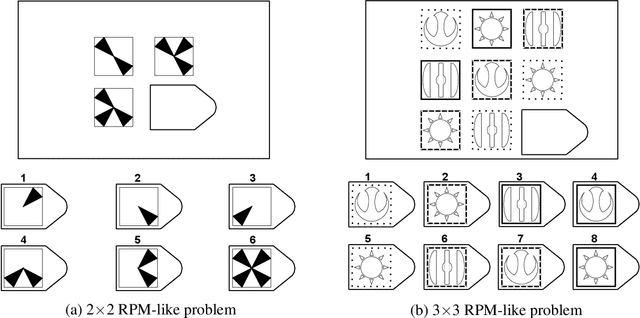
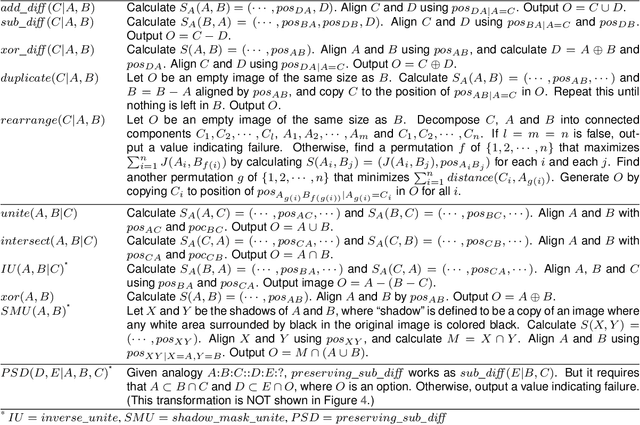


Abstract:Raven's Progressive Matrices is a family of classical intelligence tests that have been widely used in both research and clinical settings. There have been many exciting efforts in AI communities to computationally model various aspects of problem solving such figural analogical reasoning problems. In this paper, we present a series of computational models for solving Raven's Progressive Matrices using analogies and image transformations. We run our models following three different strategies usually adopted by human testees. These models are tested on the standard version of Raven's Progressive Matrices, in which we can solve 57 out 60 problems in it. Therefore, analogy and image transformation are proved to be effective in solving RPM problems.
Automatic Item Generation of Figural Analogy Problems: A Review and Outlook
Jan 20, 2022
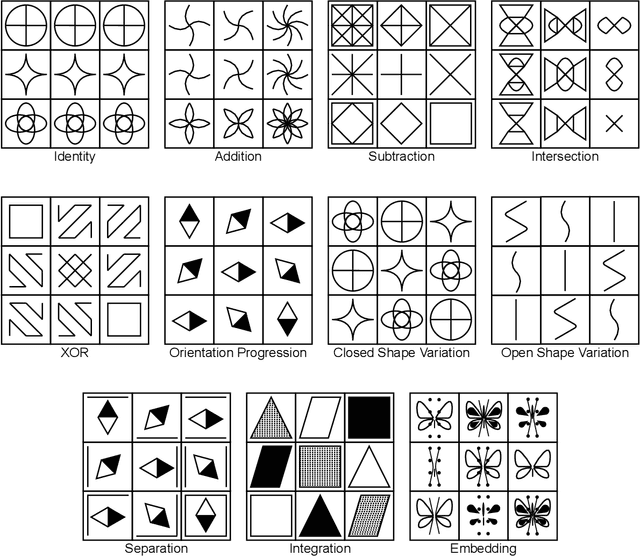
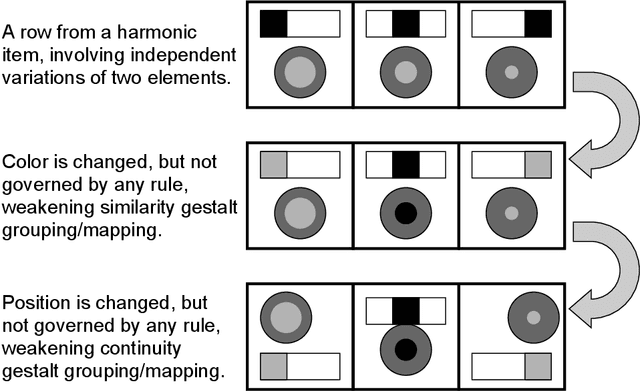
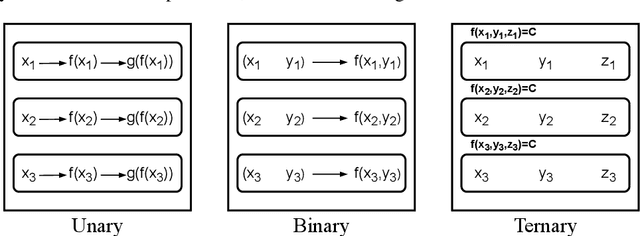
Abstract:Figural analogy problems have long been a widely used format in human intelligence tests. In the past four decades, more and more research has investigated automatic item generation for figural analogy problems, i.e., algorithmic approaches for systematically and automatically creating such problems. In cognitive science and psychometrics, this research can deepen our understandings of human analogical ability and psychometric properties of figural analogies. With the recent development of data-driven AI models for reasoning about figural analogies, the territory of automatic item generation of figural analogies has further expanded. This expansion brings new challenges as well as opportunities, which demand reflection on previous item generation research and planning future studies. This paper reviews the important works of automatic item generation of figural analogies for both human intelligence tests and data-driven AI models. From an interdisciplinary perspective, the principles and technical details of these works are analyzed and compared, and desiderata for future research are suggested.
The AI Triplet: Computational, Conceptual, and Mathematical Representations in AI Education
Oct 14, 2021
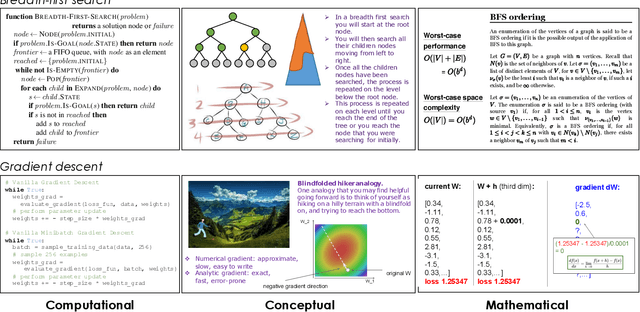
Abstract:Expertise in AI requires integrating computational, conceptual, and mathematical knowledge and representations. We propose this trifecta as an "AI triplet," similar in spirit to the "chemistry triplet" that has influenced the past four decades of chemistry education. We describe a rationale for this triplet and how it maps onto topics commonly taught in AI courses, such as tree search and gradient descent. Also, similar to impacts of the chemistry triplet on chemistry education, we suggest an initial example of how considering the AI triplet may help pinpoint obstacles in AI education, i.e., how student learning might be scaffolded to approach expert-level flexibility in moving between the points of the triplet.
Do Time Constraints Re-Prioritize Attention to Shapes During Visual Photo Inspection?
Apr 14, 2021
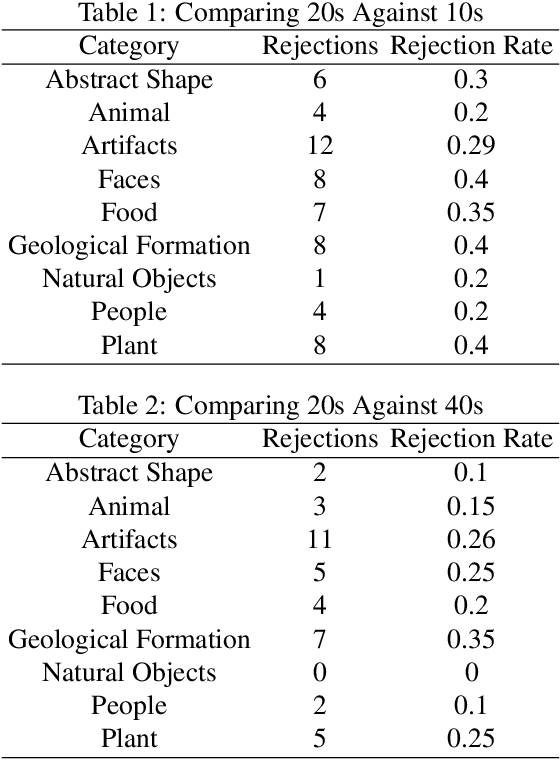
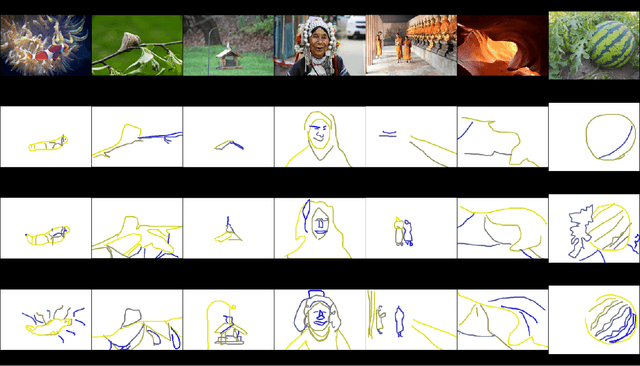
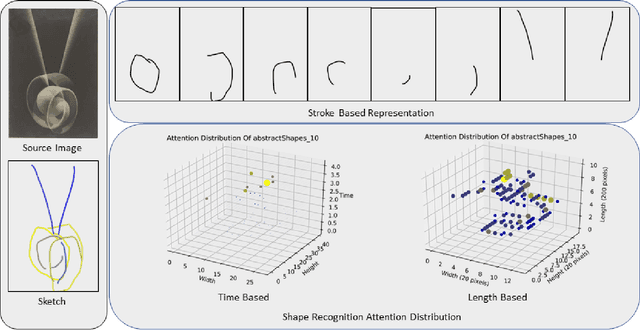
Abstract:People's visual experiences of the world are easy to carve up and examine along natural language boundaries, e.g., by category labels, attribute labels, etc. However, it is more difficult to elicit detailed visuospatial information about what a person attends to, e.g., the specific shape of a tree. Paying attention to the shapes of things not only feeds into well defined tasks like visual category learning, but it is also what enables us to differentiate similarly named objects and to take on creative visual pursuits, like poetically describing the shape of a thing, or finding shapes in the clouds or stars. We use a new data collection method that elicits people's prioritized attention to shapes during visual photo inspection by asking them to trace important parts of the image under varying time constraints. Using data collected via crowdsourcing over a set of 187 photographs, we examine changes in patterns of visual attention across individuals, across image types, and across time constraints.
Characterizing Datasets for Social Visual Question Answering, and the New TinySocial Dataset
Oct 08, 2020
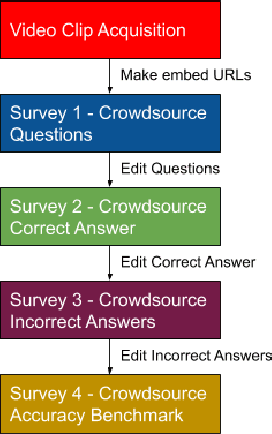
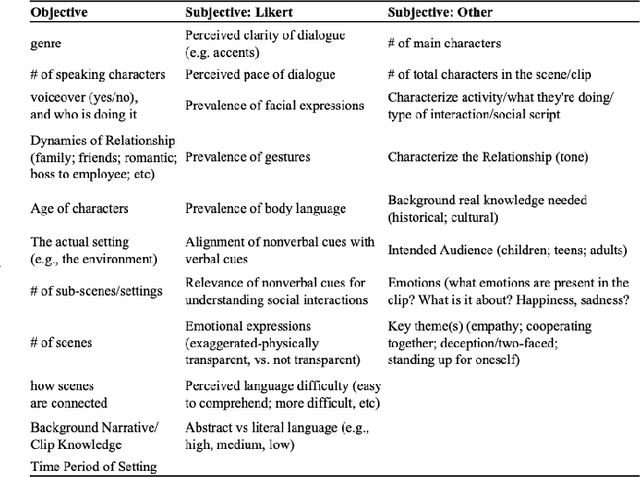
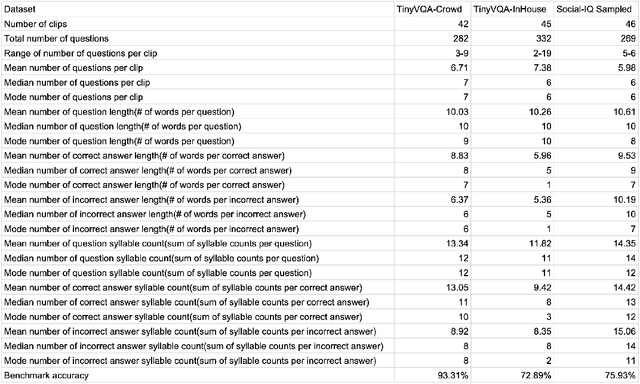
Abstract:Modern social intelligence includes the ability to watch videos and answer questions about social and theory-of-mind-related content, e.g., for a scene in Harry Potter, "Is the father really upset about the boys flying the car?" Social visual question answering (social VQA) is emerging as a valuable methodology for studying social reasoning in both humans (e.g., children with autism) and AI agents. However, this problem space spans enormous variations in both videos and questions. We discuss methods for creating and characterizing social VQA datasets, including 1) crowdsourcing versus in-house authoring, including sample comparisons of two new datasets that we created (TinySocial-Crowd and TinySocial-InHouse) and the previously existing Social-IQ dataset; 2) a new rubric for characterizing the difficulty and content of a given video; and 3) a new rubric for characterizing question types. We close by describing how having well-characterized social VQA datasets will enhance the explainability of AI agents and can also inform assessments and educational interventions for people.
Creative Captioning: An AI Grand Challenge Based on the Dixit Board Game
Sep 30, 2020


Abstract:We propose a new class of "grand challenge" AI problems that we call creative captioning---generating clever, interesting, or abstract captions for images, as well as understanding such captions. Creative captioning draws on core AI research areas of vision, natural language processing, narrative reasoning, and social reasoning, and across all these areas, it requires sophisticated uses of common sense and cultural knowledge. In this paper, we analyze several specific research problems that fall under creative captioning, using the popular board game Dixit as both inspiration and proposed testing ground. We expect that Dixit could serve as an engaging and motivating benchmark for creative captioning across numerous AI research communities for the coming 1-2 decades.
 Add to Chrome
Add to Chrome Add to Firefox
Add to Firefox Add to Edge
Add to Edge